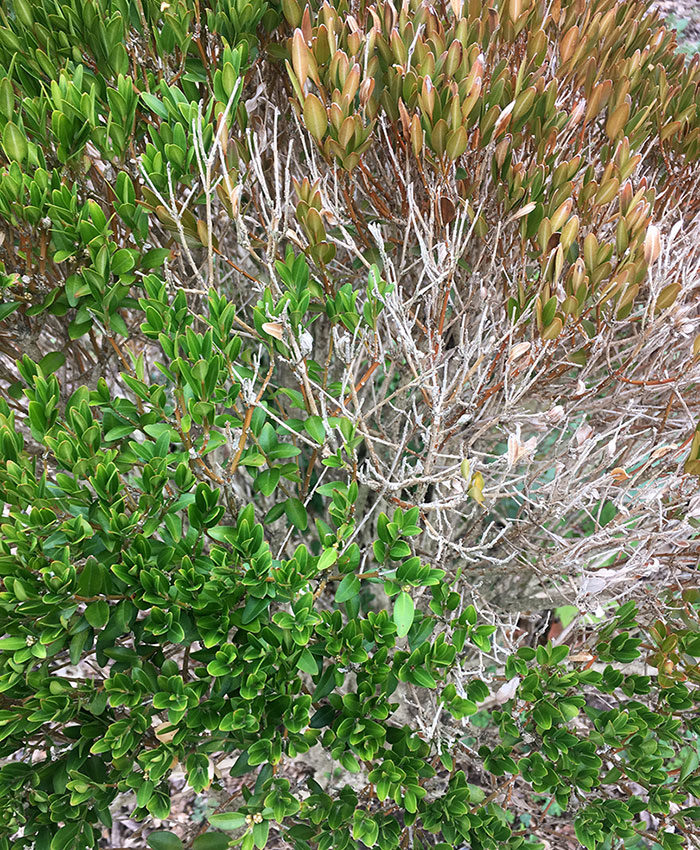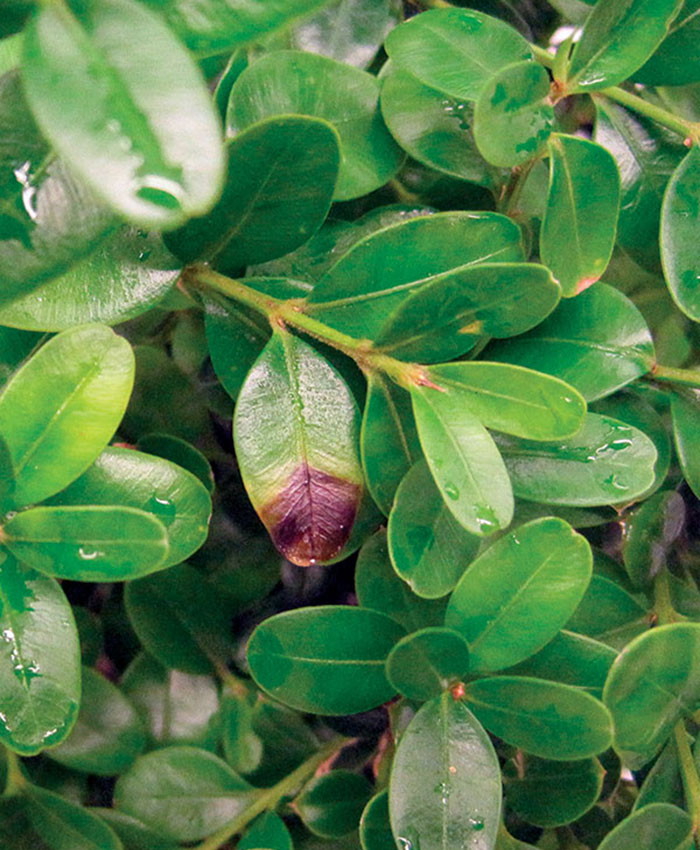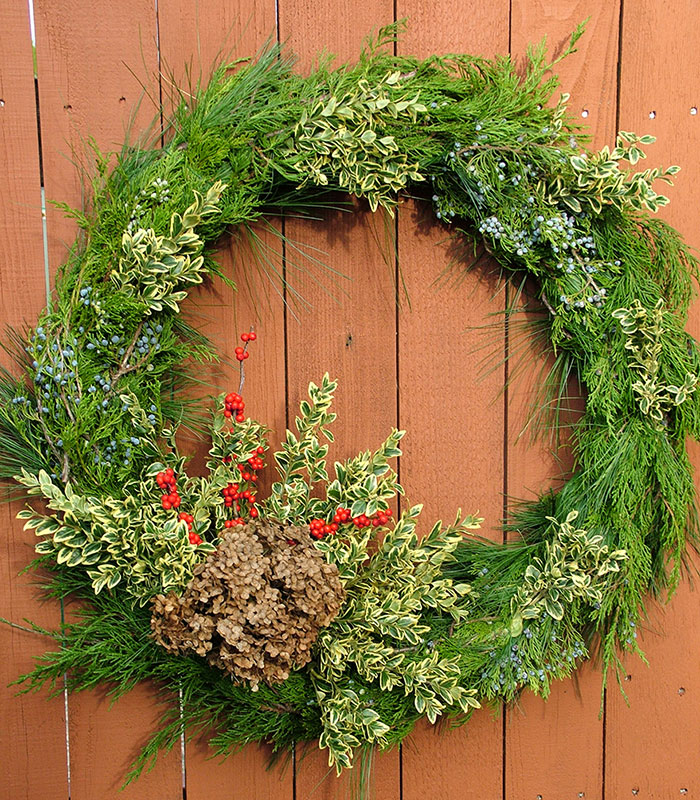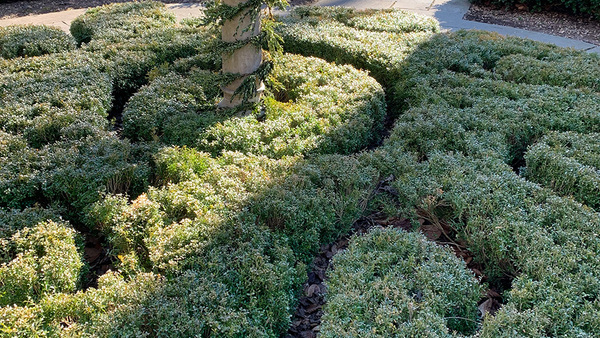
From the historic landscapes of Colonial Williamsburg and the grand plantings of Longwood Gardens to countless home gardens throughout the Mid-Atlantic, boxwoods (Buxus spp. and cvs., Zones 4–9) have long been a go-to plant for hedges, accents, and foundation plantings throughout our region. However, a serious new threat has appeared within the last decade—a devastating disease known as boxwood blight.

This fungal disease, caused by the organism currently known as Calonectria pseudonaviculata, also attacks other boxwood-family plants, including sweet box (Sarcococca spp. and cvs., Zones 6–9) and pachysandras (Pachysandra spp. and cvs., Zones 3–9). Common symptoms include dark, circular spots on the leaves and black streaks on the stems, progressing to browning leaves and complete leaf drop. Affected plants may try to resprout, but they will be seriously weakened and eventually die.

Once boxwood blight is in your landscape, the spores can spread quickly, carried on pruning tools, gloves, and shoes, particularly in summer and fall. Certain fungicide sprays can help to protect healthy plants, and disinfecting gardening equipment and washing clothing can help to control the spread if you think any of your plants might be infected. Definite diagnosis of boxwood blight requires a laboratory test, because other pests and diseases—as well as cultural problems, such as winter injury—can cause similar symptoms. Your state’s extension service or department of agriculture should be able to help you find a laboratory or diagnostic clinic if you want a definite diagnosis. If you’re sure you have it, though, you should remove and destroy the plants. The spores can live in the soil for five to 10 years, so it’s best to not replant boxwoods in that spot.

The most dependable way of coping with boxwood blight is avoiding it in the first place. Purchase new boxwood plants only from reputable sources, such as those in Pennsylvania’s Boxwood Clean Program or the national Boxwood Blight Cleanliness Program. Before you choose a particular kind of boxwood, be aware that researchers have found that the species and cultivars vary in their resistance to the disease, and new resistant or tolerant selections are coming on the market: NewGen Freedom® (‘SB300’) and NewGen Independence® (‘SB108’) are two examples. Another option is to choose a nonboxwood alternative for your landscape, such as Japanese holly (Ilex crenata, Zones 5–9) or our native inkberry (Ilex glabra, Zones 4–9).

Because boxwood blight is a relatively recent development in Mid-Atlantic landscapes, new information about the disease is continually being released, and states in our region are working on ways of handling it. Pennsylvania, for example, has a quarantine, and Virginia has a Boxwood Blight Task Force. Consider checking with your state’s department of agriculture to find out the current status of this disease in your specific area, as well as get up-to-date management suggestions.
—Nancy J. Ondra is the author of over fifteen books, including Grasses, The Perennial Care Manual, and The Perennial Matchmaker.
Fine Gardening Recommended Products

SHOWA Atlas 370B Nitrile Palm Coating Gloves, Black, Medium (Pack of 12 Pairs)
Fine Gardening receives a commission for items purchased through links on this site, including Amazon Associates and other affiliate advertising programs.

ARS Telescoping Long Reach Pruner
Fine Gardening receives a commission for items purchased through links on this site, including Amazon Associates and other affiliate advertising programs.

Spear & Jackson 4930FZ Razorsharp Telescopic Tree Pruner
Fine Gardening receives a commission for items purchased through links on this site, including Amazon Associates and other affiliate advertising programs.



















Comments
Log in or create an account to post a comment.
Sign up Log in